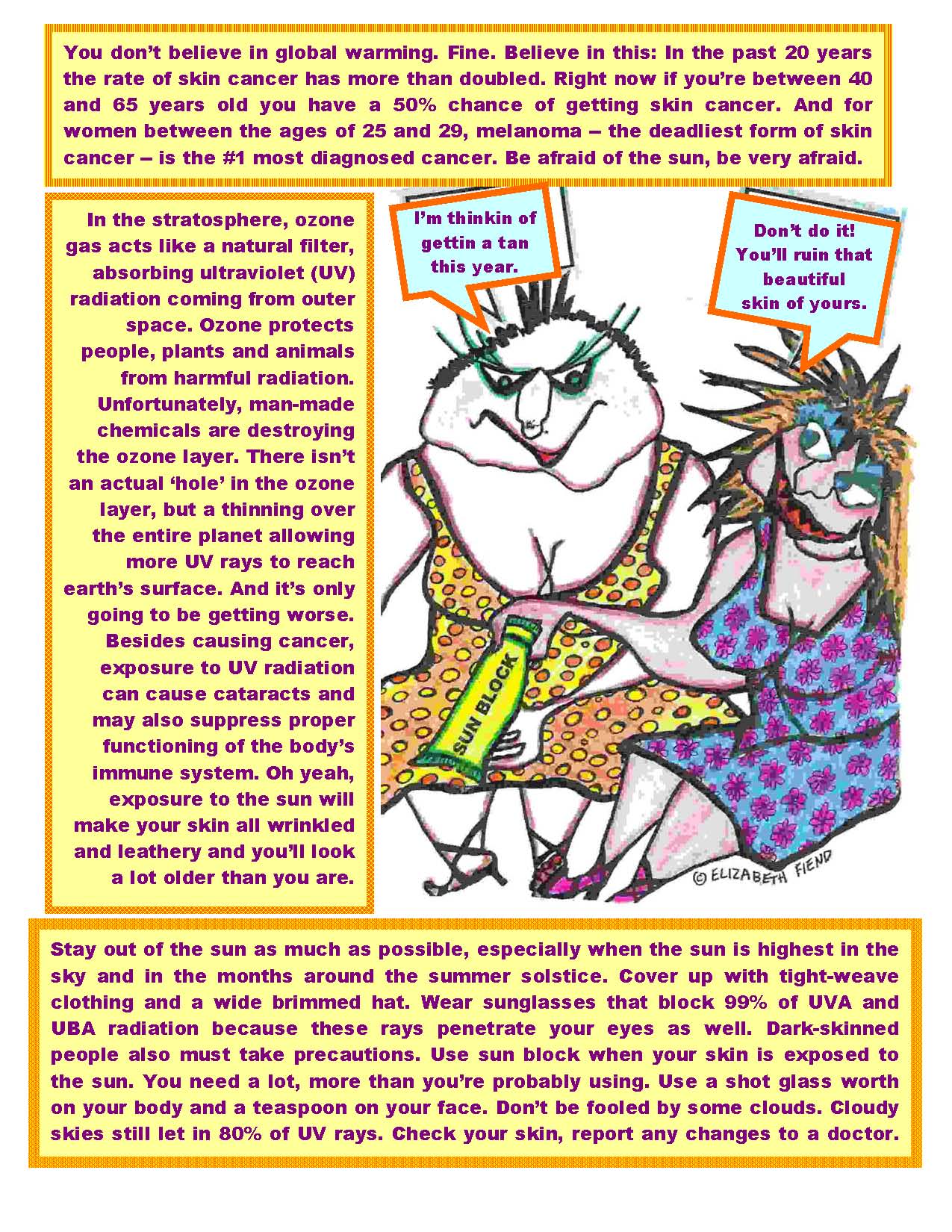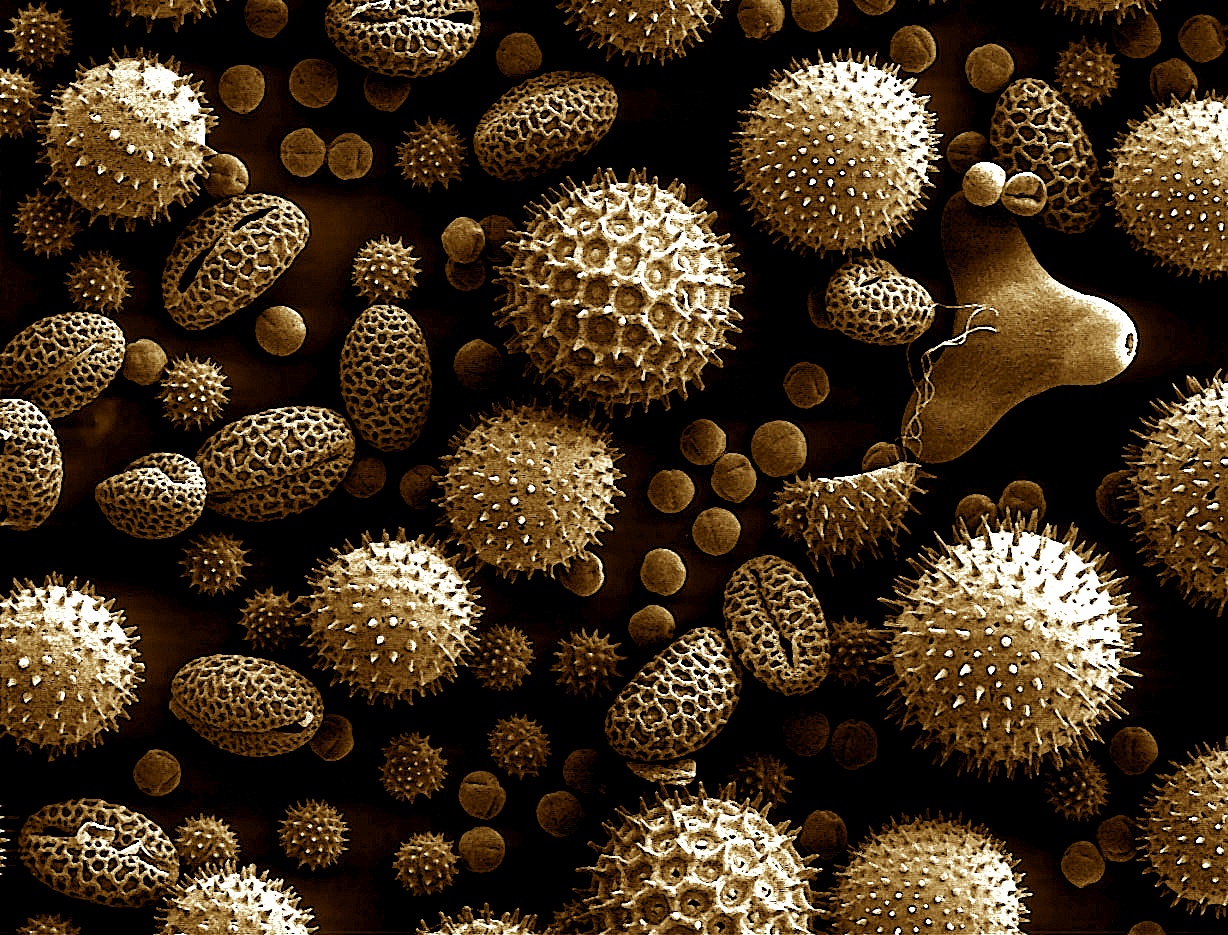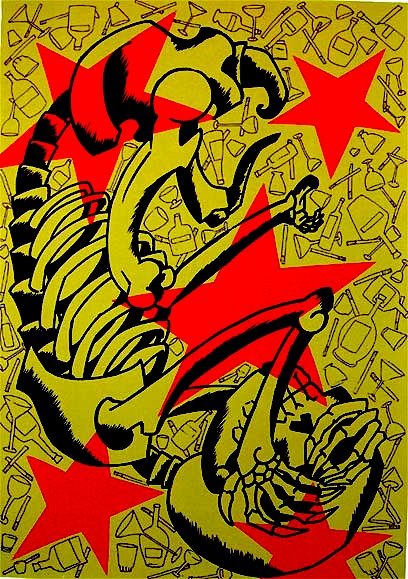
EDITOR’S NOTE: At no time in recorded history have we possessed so much knowledge about health and nutrition, nor have we ever had such vast and effective machinery for disseminating that knowledge — and yet, for all intents and purposes, we live in hi-tech Dark Age with the vast majority of the global population essentially ignorant or confused about the basic facts of their own biology. How did this happen? Well, that’s a whole six-part mini-series in and of itself, but the short answer is that the bottom line of many a multi-national corporation is dependent on that ignorance, and vast sums of money are expended to maintain it.
To help remedy this violation of the public’s right to know, Phawker began publishing Elizabeth Fiend’s JUNK SCIENCE column. Every week, Miss Fiend connects the dots to reveal a constellation of scientific facts that have been hiding in plain sight — scattered across the vast, cold reaches of the Internet. With a background in punk rock and underground comics, and longstanding employment as a de facto research librarian, Miss Fiend doesn’t pretend to be a scientist or an expert. She does, however, know how scientific facts become diluted by corporate-sponsored non-facts, and every week she separates the smoke from the mirrors. Why? Because she loves you.
JUNK SCIENCE: Freeze! Drop The Twinkie!
BY ELIZABETH FIEND Spring is in the air, and peoples’ attention will be turning to romance and in turn lookin’ good for the summer months when you get to show off a lot more skin. If you’re considering going on a diet to look great to attract that special someone, I can help you because I know THE definitive way to lose weight. Send me a check and I’ll spill it. Oh hell, I’ll just tell you right now. The way, and this is the only way to lose weight — drum roll please….. eat less and/or exercise more. Or to be very precise, burn more calories than you consume. This is the only way, folks. Don’t let anyone else tell you differently and don’t spend any money or waste time on any other scheme.
Calories in, calories out.
Every fad diet or even the ones that linger — such as Atkins, Weight Watchers, South Beach, The Zone, The Grapefruit Diet, The Cabbage Soup Diet — no matter what they try to get you to believe (eat only protein, eat no
fat, eat only grapefruit) underneath it all, at the end of the meal these diets are about one thing — calorie restriction.
The camouflage that these diets wrap themselves in, and the way they differ from one another, is in their strategy of helping you to stick to the restricted caloric intake. These strategies really can help you consume fewer calories by making you feel less hungry. For example, it’s true that simple carbohydrates, like cake and white bread, release all their energy (or calories) into your blood quickly. You eat, you crash. You feel lack of energy so you eat again. Foods containing protein and complex carbs, nuts and the whole grains in whole wheat pasta or brown rice, release their energy slowly, over time, making you feel more satiated and therefore less likely to consume more calories. Fruits and vegetables, which contain few calories to begin with, can fill you up because you can eat a lot of them and not consume too many calories. Portion control, consuming whole grains and lean protein, eating 7 to 9 servings of vegetables and fruits a day, and a constant, moderate exercise program — these are the keys to losing weight. MORE
*
Absinthe Makes the Heart Grow Fonder
As absinthe’s popularity grew, so did public hysteria over it. It had a lovely, very social aspect to its buzz
which was first attributed to the flavoring herb anise. Later it was credited to the psychoactive ingredient in wormwood, thujone. Thujone creates what’s called a ‘lucid-drink effect,’ kinda like doing a line and then pounding a shot. Current science says thujone increases and randomizes the firing of neurons in your brain. This tends to make you a bit more imaginative — old things look new and everything looks crisp. Creative people just love that. This is a secondary effect. The primary effect of absinthe was that people were getting wasted like never before. Why? Because absinthe is a distilled spirit, a liquor, and the masses were chugging it down like wine. It wasn’t the thujone that made that Swiss farmer kill his family, it was the liquor. He had 2 glasses of absinthe for breakfast, followed by 2 liters of wine and a bunch of brandy — only then did he go get his gun. But the government, the wine lobbyists, the rich and powerful cognac manufacturers and the prohibitionists wouldn’t have it: Why, this isn’t harmless booze at all! It’s a drug! This seductive Green Fury will lead the whole continent to the very bowels of Hell! And so absinthe became the scapegoat for all of society’s ills. Sound familiar? I thought it might. MORE
*
Allergies Are The Little Lies The Body Tells Itself
ITCHYCOO PARK: Pollen up close and sepia
BY ELIZABETH FIEND LIVING EDITOR What do vaginal dryness, lousy driving, methamphetamine, cocaine, steroids and Kleenex all have in common? You guessed it: this article is gong to be all about seasonal allergies. Allergies are caused by a body’s misplaced, overblown reaction to something that in reality isn’t harmful. When this happens the culprit is called an allergen. Pollen is an allergen, though it’s a harmless substance, not poisonous in any way to humans. But for a growing number of people, pollen, mold, animal fur and dust mites trigger an unnecessary, and unfortunate, attack by their immune system. The result of this attack is an allergic reaction — nasal secretion, itchy throat, eyes, and ear canals, sneezing, tearing eyes, stuffy nose and ears. Allergies also make some people tired, cranky, impair memory and concentration and prevent sleep. MORE
*
The Bottle And The Damage Done
[artwork by Alex Binnie]
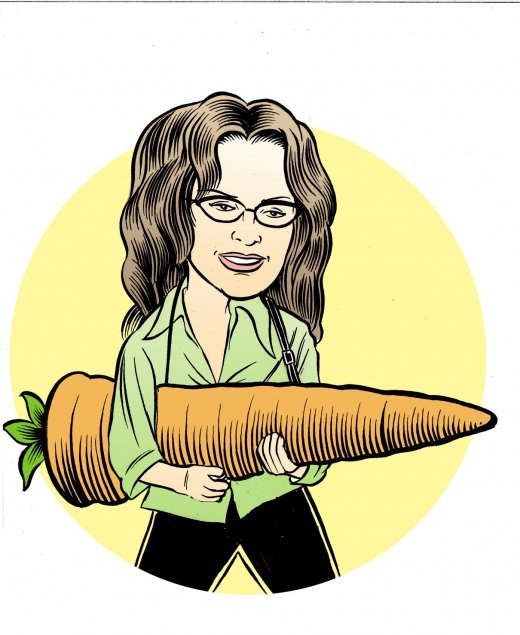 BY ELIZABETH FIEND LIVING EDITOR Booze — it’s intoxicating, complicated stuff. Light drinking can extend your life, heavy drinking will end it prematurely. Consuming a small amount of alcohol prevents platelets in the blood from sticking together and forming clots, thus preventing heart attack and certain types of stroke. (Aspirin helps prevent blood clots in a similar way.) But anything more than one drink a day for women and up to two a day for men is a bummer for your health. Drinking more can cause stroke and heart disease, and also messes up your liver and kidneys and can contribute to arthritis and a variety of cancers. It can make you malnourished or overweight; hyperglycemic or hypoglycemic. Alcohol can mess up your unborn baby; and make you depressed, anxious or suffer from insomnia. And you can become addicted. MORE
BY ELIZABETH FIEND LIVING EDITOR Booze — it’s intoxicating, complicated stuff. Light drinking can extend your life, heavy drinking will end it prematurely. Consuming a small amount of alcohol prevents platelets in the blood from sticking together and forming clots, thus preventing heart attack and certain types of stroke. (Aspirin helps prevent blood clots in a similar way.) But anything more than one drink a day for women and up to two a day for men is a bummer for your health. Drinking more can cause stroke and heart disease, and also messes up your liver and kidneys and can contribute to arthritis and a variety of cancers. It can make you malnourished or overweight; hyperglycemic or hypoglycemic. Alcohol can mess up your unborn baby; and make you depressed, anxious or suffer from insomnia. And you can become addicted. MORE
*
Certainly, buying organic food seems like the way to go since pesticides are strictly a no-no. Organic practices are kinder to the land, they promote good soil development, as opposed to agribusiness techniques which deplete the soil — and hence your food — of vital nutrients. Organic practices don’t pollute the water, the air or the workers on the farm through exposure to toxic chemicals the way agribusiness practices do, either. And a fundamental part of the organic philosophy is to treat their workers fairly and pay a living wage.
But there’s a crisis in the organics world, and it’s called Big Business. Too much of a good thing has gone haywire. Organic food is so much in demand that there just isn’t enough to go around. The only solution has
been to change farming methods, to outsource, and to go global to get the desired goods. What was once an industry of small family farms has mushroomed into a new kind of agribusiness, one doing business with Wal-Mart, Kraft, Kellogg and General Mills; one that outsources the growing of organic food to places with little regulation, like China.
Big business is finding loopholes in the legal definition of organic and is taking the modern organic farm further and further away from the original, fundamental philosophies of organics. There are already consumer boycotts against organic companies such as Horizon Farms, makers of Silk soy milk, who may not be sticking to the philosophies. In fact, organic standards have deteriorated enough that there’s a whole new classification for farms that do follow the philosophies, deep organics. If you only care about yourself, buy organic. But if you care about the environment and stuff like global warming, or if you have concerns about any of the questionable practices of organic-agribusiness, who to buy your produce from gets a lot more complicated. MORE
*
Let’s Get SMALL (Nano, Nano)
ELIZABETH FIEND REPORTS: As an avid cyber punk fan I’ve been longing for William Gibson’s future, where I
could step into a convenience store nano-dispenser and emerge clad in a swirling, gleaming, electronic nano-dress, one that changes motif with my every thought. A world where my social calendar, stored in a nano-rhinestone atop my sunglasses, would be filled with the wild parties of tomorrow. Today’s nanotechnology isn’t quite as sexy as that, but it’s just as unrestrained. Currently nanotechnology centers around the production of super-teeny-tiny materials and chemicals. We’re talking small, atomic scale small, the size of a molecule — like a particle one thousandth the width of a human hair. Specifically, one nano-metre is equal to one billionth of a meter. As more and more particles are being manufactured with lengths between 1 and 100 nanometers, industry experts say these materials may pose unpredictable risks to the public. OK, I’m going to go out on a limb here and go on record right now: I predict that these super-small materials will pose unexpected problems. MORE
*

Wash Your Hands Child, You Walk Like A Peasant!
Germs, bacteria, and viruses can live for two hours on hands and on a clean, dry surface. On a wet surface they can live for weeks. Your average pair of worn undies contains a .1 gram of feces. Salmonella, hepatitis A and rotavirus, all found in fecal matter, can cause violent diarrhea and terrible tummy aches. Water must be at at least 140 degrees to sanitize and kill theses germs, yet only 5 percent of Americans use water that hot for their washing (isn’t it amazing the things we know?). These nasty germs can also survive the average 28-minute
drying cycle. Therefore, experts recommend that you wash your hands after doing laundry. Hardcore, huh? Unwashed hands kill a lot of people each year. The Centers for Disease Control and Prevention says that poor hand washing contributes to almost half of the 9,000 deaths caused each year by outbreaks of food-borne illnesses like salmonella, shigellosis, hepatitis A and E. coli. More people are killed by germs in hospitals each year than by fires, car crashes and drowning combined, and the government has estimated that about 20,000 of those deaths might have been prevented by the simple act of proper hand washing.
You’ve heard of those disastrous cruises where untold numbers of passengers come down with the super bad-ass stomach flu caused by the norovirus. This bug is so viral some people may be contagious for up to two weeks — after they’ve recovered! The single, most painless way to stay healthy and to stop the spread of illness to others is to wash your freaking hands. Spend 20 seconds rubbing your hands — with soap — under the faucet. Wash all the surfaces, the front, backs and in-between the fingers. Do it every time. And for crying out loud, keep your hands away from your face — your mouth, eyes, nose — and throw away your tissues immediately after use. MORE
*
JUNK SCIENCE: Soy To The World!
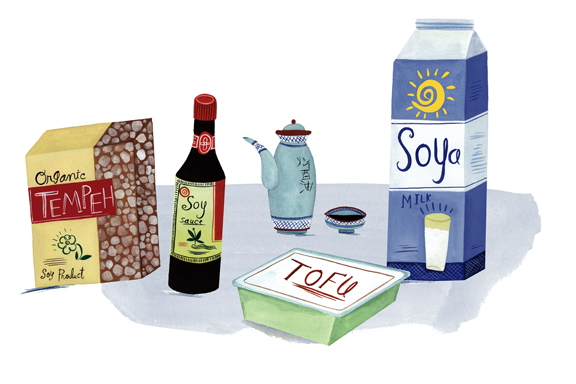
BY ELIZABETH FIEND You wait and wait, eagerly anticipating your favorite time of the year, and suddenly, it’s here! April is National Soy Month, the most delicious month of the year! Soy is one hell of an amazing plant, one that’s been part of the human diet for over 5,000 years. But it’s much, much more than just veggie burgers. The soybean is also used as food for livestock and it has all the properties of petroleum — except unlike petrol, soy is biodegradable. Wow, doesn’t knowing that you could fuel up your car or feed your cow with it make soy even more mouth-watering, appetizing and desirable to you? This bean’s potential is astounding. MORE
*
JUNK SCIENCE: A Spring Clean For The May Queen
BY ELIZABETH FIEND The vernal equinox, AKA spring time, occurs when the earth is tilted so that the sun is directly over the equator at high noon. In this momentary balance of light and dark, we are halfway between summer and winter. Mid-points have been celebrated through out the ages and around the world. In ancient Babylon, the New Year occurred at the spring equinox. The ancients of America oriented their giant earthwork mounds to equinox sunrise points. Celtic Pagans lit fires at dawn to cure ills, renew life and protect crops. Today, we party in Cancun.
Or we clean.
This season of renewal brings with it the tradition of spring cleaning, making now as good a time as any
to switch to all things natural. I’m talking about cleaning products — for your home and your body. All types of non-toxic cleaners for your home are now available in conventional supermarkets: glass, drain, dishwasher, dish soap, laundry, shower, even toilet bowl cleaners. Most are competitively priced or cost just a tad bit more than chemical-based cleaners. Theses natural cleaners are conveniently located right next to the toxic ones, or maybe on a shelf not quite at eye level.
Instead of the toxic, nonrenewable or harmful-to-the-environment ingredients like petroleum, butyl cellosolve, chlorine bleach, and the cancer-causing fragrance ingredient phthalates, the new non-toxic cleaners are made from ingredients like corn, grain alcohol, palm kernel, and citrus and coconut oils. And they really work. Hypo-allergenic, with no perfumes or dyes, they smell nice too. To my nose, they smell way, way better.
Why make the switch? MORE
*
Pansies, roses, calendula, squash flowers, anise hyssop, day lilies, bee balm, marigolds, carnations, sunflower buds, the flowers from
most herbs and Thomas Jefferson’s favorite flower, from the hyacinth bean, are all edible.
Luckily, most edible flowers are easy to grow. As an added bonus, many are classified as herbs and have medicinal qualities. In fact many of these herbs, such as basil, have turned out to be super foods — possessing unique power to keep you healthy at the cellular level.
Edible flowers will shine as an amazingly colorful addition to a dish by transforming the ordinary into the sublime. I always feel like a fairy princess when I eat a salad laden with colorful petals — yellow and orange calendula, purple Johnny jump-ups — all intermingling with the emerald and kelly greens of mixed lettuce. MORE
*
JUNK SCIENCE: Battlefield Earth

Breast cancer rates are startlingly high among people who lived near the 1951-1962 atomic tests in
Nevada and Utah. Regardless, the Bush administration has raised the possibility of resuming nuclear testing in Nevada. “I Belong to a Clan of One-Breasted Women,” by Terry Tempest Williams, is a heart-breaking essay about a Mormon family who witnessed those atomic tests. The story begins: “My mother, my grandmothers, and six aunts have all had mastectomies. Seven are dead. The two who survive have just completed rounds of chemotherapy and radiation.” More recently in Alaska, as a result of nuclear testing off that state’s coast, doctors say workers there will develop cancer at twice the rate as the general public. MORE
*
India is an ancient land of exotic foods flavored with sizzling spices, blended in sophisticated, aromatic, mouth- watering ways. Dishes are seasoned with a dazzling array of herbs and spices, ones we rarely cook with like
fenugreek, asafetida, black mustard seed, mint, cardamom and rose petal essence. Complex, heady mixes like Tandoori spice are heady with ginger, nutmeg, coriander, cumin, paprika, black pepper, salt, cloves, cinnamon and turmeric, each blend particular to each cook, the recipes passed on down the generations.
Compare the intricacy of Tandoori spice to our ‘special sauce’ — a mix of mayo and ketchup — served on our national dish, the Big Mac, which is seasoned with salt and lots of it. Then compare India’s rates of breast cancer, lung disease and Alzheimer’s to our own. In India, 79 women in a million develop breast cancer each year, while here in the U.S. it’s a whopping 660 per million. India’s rate of lung cancer is even lower, about 30 people per million, while ours is over 600 per million. India also has the lowest rate of Alzheimer’s in the world. So what’s up with this? MORE
*
JUNK SCIENCE: Hey Swinger

ELIZABETH FIEND LIVING EDITOR I have a hammock — it’s my own soft, cotton cocoon. And it’s one of the best investments I ever made.In fact, I have two hammocks: a net-like Mayan style hammock (like the kind us Gringos are familiar with), and one a bit more unusual. It’s from Ecuador and it’s made out of wool tightly woven into bands of brilliant reds, purples and blues. We always associate hammocks with the beach, but this Ecuadorian hammock, made for
people who live way up in the Andes, keeps you toasty warm and has increased my outside hammock time by at least two months. I can settle in to a hammock in the late fall and the late winter months wearing a coat, sometimes with a small blanket, and watch the last birds of the season going about their business and later see the first early bird arrive. A crisp day is just as wonderful a time to relax as the hot summer one. MORE
*
JUNK SCIENCE: Made In The Shade

